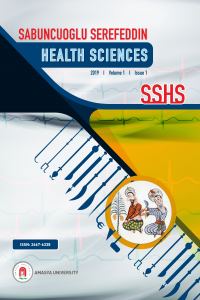Drug and addictive substance poisoning with medical pharmacologist assessment
Drug and addictive substance poisoning with medical pharmacologist assessment
Purpose: Poisoning is a medical emergency that represent a major health problem all over the world. The rate of poisoning with prescription and non-prescription drugs, and addictive substances are increasing day by day. Methods: This paper summarizes drugs and addictive substances that often cause poisoning in 2017 and their pharmacological properties. Results: Among all the poisonings, drug poisonings were the first in adults and third in children age 5 years or less. Analgesics were the most common drug poisoning in both populations. Considering the etiology of drug poisoning, the ranking is as follows: sedative-hypnotics/ antipsychotics, opioids and other addictive substances, alcohols, calcium channel blockers and acetaminophen (paracetamol). Amphetamines were the most frequent poisoning substances in addictive substances. Analgesics are the cause of poisoning that results in death at age 5 or less. Major conclusions: Although paracetamol, one of the analgesics, which is sold over the counter, ranks 6th among the fatal poisonings, it is in the first place among drug poisonings in all age groups, probably because of its easy access and cheapness.
Keywords:
Acetaminophen, Amphetamine, Calcium channel blockers, Medication, Poisoning Tricyclic antidepressants,
___
- Referans1. Baselt RC. Disposition of Toxic Drugs and Chemicals in Man, 7th, Biomedical Publications, Fost er City 2004.
- Referans2. Chiang WK. Amphetamines. In: Goldfrank’s Toxicologic Emergencies, 9th, Goldfrank LR (Ed), M cGraw-Hill, New York 2011. p.1078.
- Referans3. Clark R, Fisher JE, Sketris IS, Johnston GM. Population prevalence of high dose paracetamol in dispensed paracetamol/opioid prescription combinations: an observational study. BMC Clin Pharmacol 2012; 12:11.
- Referans4. Clinical toxicology course, Clinical Toxicology Study Group of Turkish Pharmacology Society, 06-07 December 2018, Istanbul/Turkey.
- Referans5. Eisenberg MJ, Brox A, Bestawros AN. Calcium channel blockers: an update. Am J Med 2004; 116:35.
- Referans6. Forrest JA, Clements JA, Prescott LF. Clinical pharmacokinetics of paracetamol. ClinPharmacokinet 1982; 7:93.
- Referans7. Gummin DD, Mowry JB, Spyker DA, Brooks DE, Osterthaler KM, Banner W. 2017 Annual Report of the American Association of Poison Control Centers’ National Poison Data System (NPDS): 35th Annual Report, Clin Toxicol (Phila). 2018 Dec;56(12):1213-1415. doi: 10.1080/15563650.2018.1533727.
- Referans8. Jaeschke H, McGill MR, Ramachandran A. Oxidant stress, mitochondria, and cell deathmechanisms in drug-induced liver injury: lessons learned from acetaminophen hepatotoxicity.Drug Metab Rev 2012; 44:88.
- Referans9. James LP, Mayeux PR, Hinson JA. Acetaminophen-induced hepatotoxicity. Drug Metab Dispos 2003; 31:1499.
- Referans10. Kerr GW, McGuffie AC, Wilkie S. Tricyclic antidepressant overdose: a review. Emerg Med J2001; 18:236.
- Referans11. Lee SS, Buters JT, Pineau T, et al. Role of CYP2E1 in the hepatotoxicity of acetaminophen. JBiol Chem 1996; 271:12063.
- Referans12. Lee WM. Drug-induced hepatotoxicity. N Engl J Med 2003; 349:474.
- Referans13. Levine M, Curry SC, Padilla-Jones A, Ruha AM. Critical care management of verapamil anddiltiazem overdose with a focus on vasopressors: a 25-year experience at a single center. AnnEmerg Med 2013; 62:252.
- Referans14. Liebelt EL. Chapter 73: Cyclic antidepressants. In: Goldfrank's Toxicologic Emergencies, 9th ed, Nelson LS (Ed), McGraw-Hill, New York 2011.
- Referans15. Makin AJ, Wendon J, Williams R. A 7-year experience of severe acetaminophen-inducedhepatotoxicity (1987-1993). Gastroenterology 1995; 109:1907.
- Referans16. Mazer M, Perrone J. Acetaminophen-induced nephrotoxicity: pathophysiology, clinicalmanifestations, and management. J Med Toxicol 2008; 4:2.
- Referans17. McAllister RG Jr, Hamann SR, Blouin RA. Pharmacokinetics of calcium-entry blockers. Am J Cardiol 1985; 55:30B.
- Referans18. McGill MR, Jaeschke H. Metabolism and disposition of acetaminophen: recent advances inrelation to hepatotoxicity and diagnosis. Pharm Res 2013; 30:2174.
- Referans19. Pentel P, Peterson CD. Asystole complicating physostigmine treatment of tricyclic antidepressant overdose. Ann Emerg Med 1980; 9:588.
- Referans20. Prosser JM, Nelson LS. The toxicology of bath salts: a review of synthetic cathinones. J MedToxicol 2012; 8:33.
- Referans21. Singer AJ, Carracio TR, Mofenson HC. The temporal profile of increased transaminase levels in patients with acetaminophen-induced liver dysfunction. Ann Emerg Med 1995; 26:49.
- Referans22. Smilkstein MJ. Acetaminophen. In: Goldfrank's Toxicologic Emergencies, Goldfrank LR, Flomen baum NE, Lewin NA, et al (Eds), Appleton & Lange, Stamford 1998. p.541.
- Referans23. Thomas, W., John, H., Willium, R. 2007. Stedman’s Medical Dictionary, 28th edition. Lippincott William and Wilkins, New York.
- Referans24. Wood DM, Davies S, Puchnarewicz M, et al. Recreational use of mephedrone (4-methylmethcathinone, 4-MMC) with associated sympathomimetic toxicity. J Med Toxicol 2010; 6:327.
- ISSN: 2667-6338
- Başlangıç: 2019
- Yayıncı: Amasya Üniversitesi
